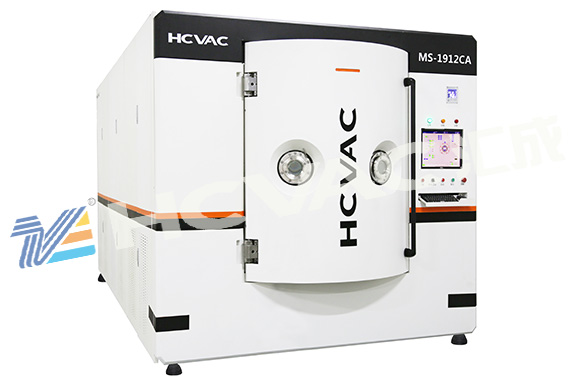With the development of basic industries and high-tech products, the demand for high-quality and high-efficiency surface modification and coating technology has extended in depth. Under the situation of mutual promotion between this field and related disciplines at home and abroad, surface modification and coating process simulation There have been breakthroughs in performance prediction and other aspects. The following will introduce the monitoring method of the pvd coating machine to you.

1. Visual monitoring: use eye monitoring, because during the growth of the film, there will be color changes due to interference phenomena. We control the film thickness according to the color changes. This method has certain errors, so it is not very accurate. Need to rely on experience.
2. Extreme value monitoring method: When the film thickness increases, its reflectivity and transmittance will change accordingly. When the reflectivity or transmittance reaches the extreme point, it can be known that the optical thickness ND of the coating is monitored. Integer multiples of one quarter of the wavelength (in). However, the error of the extreme value method is relatively large, because when the reflectivity or transmittance changes very slowly near the extreme value, that is, the film thickness ND increases a lot, and the R/T changes. The position where the reflection is more sensitive is at one-eighth wavelength.
3. Fixed value monitoring method: This method utilizes that the coating stop point is not at the quarter-wave position of the monitoring wavelength, and then the computer calculates the reflectivity of the total film thickness at one wavelength, which is the coating stop point.
4. Crystal oscillation monitoring: It works on the principle that the vibration frequency of the quartz crystal is inversely proportional to its quality. However, one disadvantage of quartz monitoring is that when the film thickness increases to a certain thickness, the vibration frequency is not entirely linear between thickness and frequency due to the characteristics of quartz itself. At this time, a new quartz oscillator must be used.
Recommended use of different types of vacuum coating machines:
1. Magnetron sputtering coating equipment: used in the field of information storage, such as magnetic information storage, magneto-optical information storage, etc.
2. Magnetron sputtering coating machine: used in protective coatings, such as aircraft engine blades, automotive steel plates, heat sinks, etc.
3. Magnetron sputtering Al film production line: used in the field of solar energy utilization, such as solar collector tubes, solar cells, etc.
4. Optical coating equipment: used in the field of optical films, such as anti-reflection films, high-reflection films, cut-off filters, anti-counterfeiting films, etc.
5. AZO transparent conductive film magnetron sputtering coating production line: used in the field of information display, such as LCD screen, plasma screen, etc.
6. Touch screen continuous coating production line: used in the field of touch screen, such as mobile phone, computer, MP4 and other digital product screens, etc.
7. Magnetron intermediate frequency multi-arc ion coating equipment: applied to hard coatings, such as cutting tools, molds and wear-resistant and corrosion-resistant parts, etc.
8. PECVD magnetron production line: used in integrated circuit manufacturing, such as thin film resistors, thin film capacitors, thin film temperature sensors, etc.
9. Evaporative
pvd coating machine: used for coating on decorative accessories, such as mobile phone cases, watch cases, spectacle frames, hardware, small accessories, etc.
10. Low-E glass coating production line: used in architectural glass, such as solar control film, low-e glass, anti-fog and anti-dew and self-cleaning glass, etc.
11. Continuous magnetron sputtering production line for anti-reflection conductive film: used in the field of electronic products, such as LCD monitors, LCD TVs, MP4, car displays, mobile phone displays, digital cameras and applause computers, etc.



